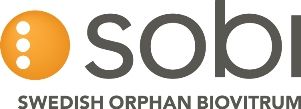Gastrointestinal nematode (GIN) infection poses the most significant obstacle to the sustainable development of small ruminant (sheep and goat) farming globally. Resistance of GINs to synthetic anthelmintic drugs has led to rising interest in exploring alternative methods for parasite control, such as the utilization of bioactive plants with anti-parasitic properties. In this investigation, black seed (Nigella sativa), a shrub high in secondary antioxidant compounds, and sericea lespedeza (Lespedeza cuneata), a perennial legume high in tannins with anti-parasitic properties were combined to determine if two bioactive plants containing different types of secondary compounds can provide a stronger anti-parasitic effect than sericea lespedeza alone. In a 49-day trial, naturally parasitized 6-7-month-old intact male Spanish goats (n = 15/treatment) were fed pelletized feeds encompassing sericea lespedeza leaf meal (SL), a combination of black seed meal (BS) and sericea lespedeza leaf meal (BS-SL - 75 % SL, 25 % BS), or alfalfa (Medicago sativa, control parasitized; CONP), with an additional group of dewormed kids given the alfalfa pellets (Control treated; CONT). Weekly measurements of animal weights and samples of blood and feces were collected to determine the packed cell volume (PCV), GIN fecal egg counts (FEC), and coccidia fecal oocyte counts (FOC), respectively. All animals were processed at the end of the trial (60 total), with adult Haemonchus contortus worms recovered from the abomasum of each goat for counting and sex determination. Carcass weights were recorded after processing. Goats given the SL and BS-SL treatments had lower FEC (P<0.05) than the parasitized alfalfa (CONP) goats. At the end of the study, the SL and BS-SL groups' FOC values were lower (P < 0.05) than the CONT and CONP groups. A rise in PCV values was seen over time for all groups; SL, BS-SL, and CONT animals exhibited higher PCV values (P < 0.05) in comparison to the CONP goats. The parasitized goats fed SL-only pellets showed greater feed intake and animal body weights (P < 0.05) compared to goats fed BS-SL or alfalfa pellets. However, the treatments had no effect on the weight of the goats' carcasses. Although the H. contortus adult worm counts in the CONT goats (alfalfa-dewormed) were lower (P < 0.05) than in the CONP goats (alfalfa-parasitized), they did not differ from the SL or BS-SL animals. This study indicates that sericea lespedeza leaf meal pellet diet, either by itself or in combination with black seed meal, showed promising results as an anthelmintic and may prove to be an effective alternative to exclusive use of conventional deworming drugs. The addition of black seed did not appear to enhance the effectiveness of sericea lespedeza in this study.










